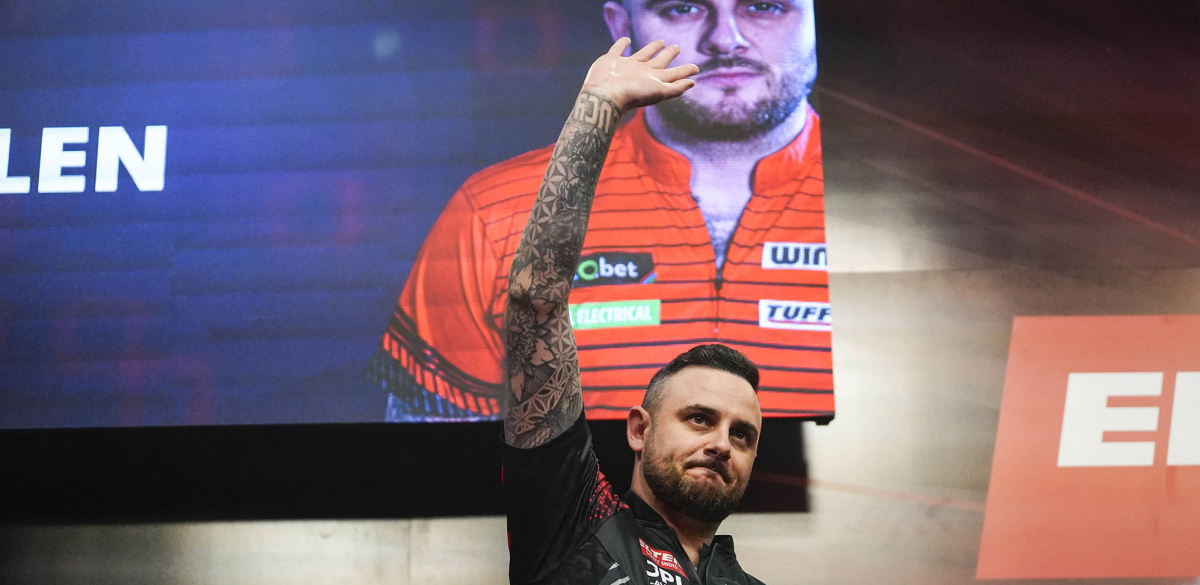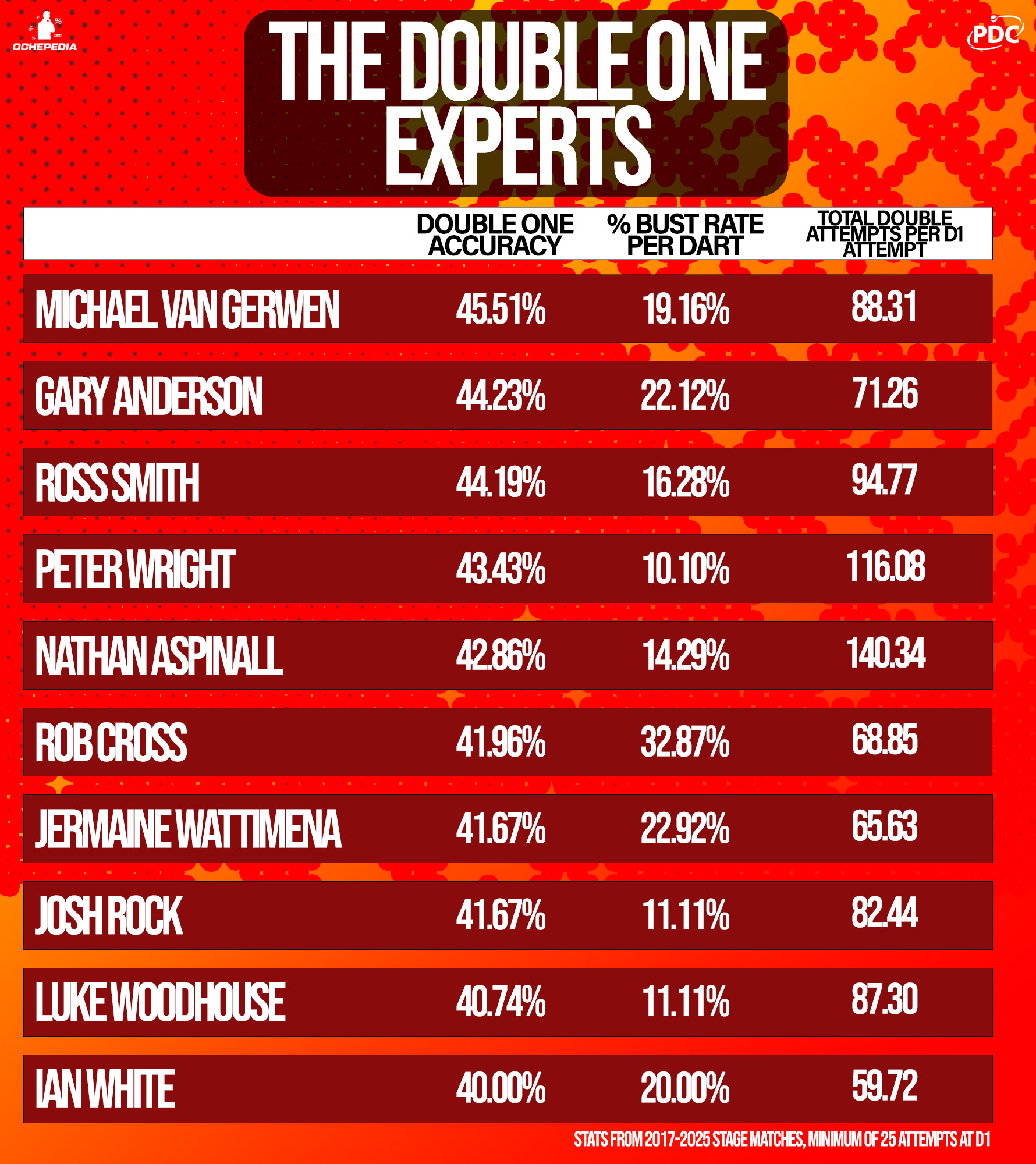
Following Joe Cullen and Thibault Tricole's infamous leg at last weekend's Austrian Darts Open, PDC Stats Analyst Christopher Kempf evaluates which players are most proficient at hitting the dreaded double one...

Joe Cullen and Thibault Tricole played out a leg to remember last weekend in Austria for all of the wrong reasons, throwing 79 darts in total across 27 visits to the board for the longest known leg in European Tour history.
Almost half of the leg was spent by the two players attempting to finish on double one, as the players and crowd became more and more bemused by the situation.
Though the situation was highly unusual for two professionals competing on the PDC ProTour, that debacle demonstrates that even for two highly-successful darts players, double one is one of the hardest targets to hit on the board.
One indicator of the standard of finishing in professional darts is the lack of attempts at double one, for if players are getting the job done on their preferred doubles, they would have no need to punch their tickets to the 'madhouse'.
Out of a sample of more than 350,000 double attempts registered in PDC stage events between 2017 and the present, barely more than 1% (4,094) attempted to resolve a remaining score of 2.
0.6% of all the double one attempts from this period are contained in just that sixth leg between Tricole and Cullen!
Of those 4,094, just 1,463 found their way to the target, for an accuracy rate of only 35.7%.
Only a handful of targets on the board are less frequently hit: the bullseye (a dartboard's smallest target), and a few other odd doubles (D3, D5 and D19 for example).
All of these doubles pose a challenge to the player who misses inside, but double one has so many opportunities for busting one's score that players are tempted to aim not at the centre of the target, but the outside wire, so as to avoid having their visit to the board end prematurely.
Being a player who is highly accurate on double one, and not prone to missing inside, is a skill of dubious value in the PDC.
Since a player has erred if he winds up in the 'madhouse’, the ability to measure a player's accuracy on that double depends on a large sample size of such errors.
His statistic is skewed by his now-famous leg, but before his Austrian Open appearance Joe Cullen was throwing one dart at double one for every 90 double attempts on stage, a propensity for double one attempts slightly below the PDC average.
Thus, even though Damon Heta does not have the highest double one percentage in the PDC, the fact that he has collected only 33 attempts at that double across six years of PDC darts (one for every 175 total attempts) suggests that a player's skill on double one can be measured by not attempting it at all.
Setting aside the fact that Michael van Gerwen is more than twice as likely to end up in the 'madhouse' as Heta, and that no other player has attempted double one so many times, at least his decades of professional experience do not desert him in such high-pressure situations.
Van Gerwen leads the PDC with 45.5% accuracy on double one and busts less than 20% of the time per attempt. #2 in accuracy is a player with even more experience Gary Anderson, on 44.2%.
There is a weak correlation between age and double one accuracy. James Wade, Peter Wright, Jonny Clayton, Mensur Suljovic and Ian White are all in the top half of stage players in accuracy on this double.
Meanwhile, at the bottom of the list is Mike De Decker, with only five checkouts from 25 attempts - but at least he is only 40% as likely to end up on that double as another emerging player, Kevin Doets - who is more likely to attempt double one than any other player, and only hits it 27.6% of the time.
Does double one accuracy translate well to another difficult double at the same height on the board, and with similar consequences for missing to the inside, double five?
In fact, no: a player's accuracy overall on doubles - a statistic which is comprised primarily by the typical doubles 20, 16 and so on - is a better predictor of how he will manage on double five than how he fares on double one.
Thus, it's hard to imagine that a player could be rewarded by spending his practice time on double one.
Use of that skill is limited to the 1% of all legs in which it is needed - only about a dozen legs per year for most players, and practice on doubles two, three, four and five would not only build familiarity with more common doubles, but would ideally instil strategies and skills for avoiding missing to the inside.
As with disease, so too with double one; the best remedy is prevention.
Follow Christopher on Twitter @ochepedia